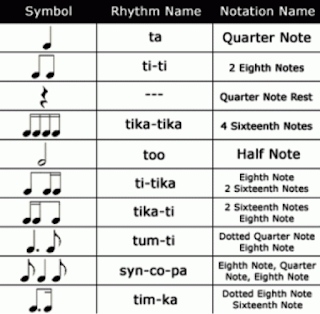Appoggio Breathing Exercises
Now that you’ve learned the various
ways it’s possible to breathe and hopefully, you’ve strengthened your breath control,
which ultimately increases your overall singing and performing
capabilities. The top exercises below are
similar to exercises I have already taught you; you may have even done a few of
these in your voice lessons with me.
However, it is extremely IMPORTANT that you MASTER these exercises.
I have a few additional exercises but I will only post them upon
request; these are seriously intense and require commitment but give them your
best shot, and let me know what you think.
•
Posture Practice - Stand up straight, feet about shoulder-width, soft
knees. Extend your hands over your head
with your thumbs together but only high enough that your head can remain LEVEL,
without strain. Be aware that this
position straightens your spine and opens your chest. Once again, “balance” is key. You need to balance your torso over your
abdomen but with the torso angled in front of the spine. Be careful not to arch your back,
however. Slowly bring your arms down but
make certain to maintain the position of your head and your chest. Your chest will be high; your head will be
level and alert; and your shoulders should be relaxed.
•
Abdominal Breathing - For this exercise, you will be standing similarly to Exercise
1. However, instead of lifting your
arms, locate your Epigastrium. This is
NOT complicated. Find your Sternum or
Breast Bone and run your hand down to the bottom of the bone. Just below the bottom of your Sternum is a
soft spot called the Epigastrium. Put
one fist on top of the Epigastrium and then, place your other fist over the
first one, and press. You want to PUSH
the air out (PRESS out your exhalation) but keep your chest raised. Continue to hold your fists in position. As soon as all the air is expelled, inhale
into your abdomen. IF you feel your
fists moved over the Epigastrium, exhale because you have inhaled TOO much
abdominal breath. Once the air is fully
expelled, instigate another inhalation but limit the intake so that the
Epigastrium remains level with the Sternum.
You should be experiencing a “comfortable” degree of fullness, not
overfill. Obviously, this kind of
breathing exercise requires LOTS of practice.
This is NOT something you can do flippantly or casually. If you want to do it well, you MUST work with
it and get it right.
•
Chest Opening - Like all exercises, this one is not meant to be something you
replicate in performance but this will, hopefully, help you get a feel for what
Intercostal Breathing “feels” like.
Stand as you did for the two exercises above. Make your hands into fists with arms bent in
front of you, with your fists together at chin level. As you INHALE, open your arms outward to your
shoulders. This should open and raise
your chest. As you exhale, pull your
arms back together. Repeat this over and
over to get the strong connection with your Intercostals, your Ribs expanding
as you INHALE. This is the one time I
will tell you to WEAR A BELT. In this
exercise, we WANT to restrict abdominal breathing and ONLY breathe using the
CHEST or Intercostals.
•
Pancostal Breathing - I cannot emphasize enough that you MUST NOT do these
exercises until you have successfully mastered Abdominal Breathing and Chest
Opening Breathing. For this exercise,
you are going to COMBINE Abdominal and Intercostal Breathing. For those of you who have taken lessons with
me, many of you have already done this particular exercise once or twice. Hopefully now, however, it will make much
more sense, and be more beneficial. Sit
on the edge of a straight-back chair with your elbows on your knees. In this position, your shoulders and upper
body really can’t engage. Draw in an
inhale like the ones from Exercise 2, so that your Epigastrium does not bulge
beyond what is comfortable. Hopefully,
you will have practiced Exercise 2 enough times to be familiar with the degree
of inhalation needed. As your inhalation
fills, toward the end you should feel your ribs start to expand. The abdominal breath should always form the
foundation for your overall breathing, and act as a support for the Intercostal
Breathing that follows. The goal is to
have these two movements become one fluid movement.
These exercises are serious and you
should respect them as such! If you want
to radically improve your singing, work these exercises and gain better and
better breath control with them. Once
you have practiced them enough times in the positions I’ve suggested here, you
should be able to employ them as you are vocalizing and performing.
Thanks so much for reading this and
following these suggested exercises; you will be glad you did! I welcome any and all of your questions,
comments, and ideas for future blog post topics. If you have questions about my lessons or me,
check out my website at www.SingitForward.net. Thanks again!
Sing it Forward!


Comments
Post a Comment